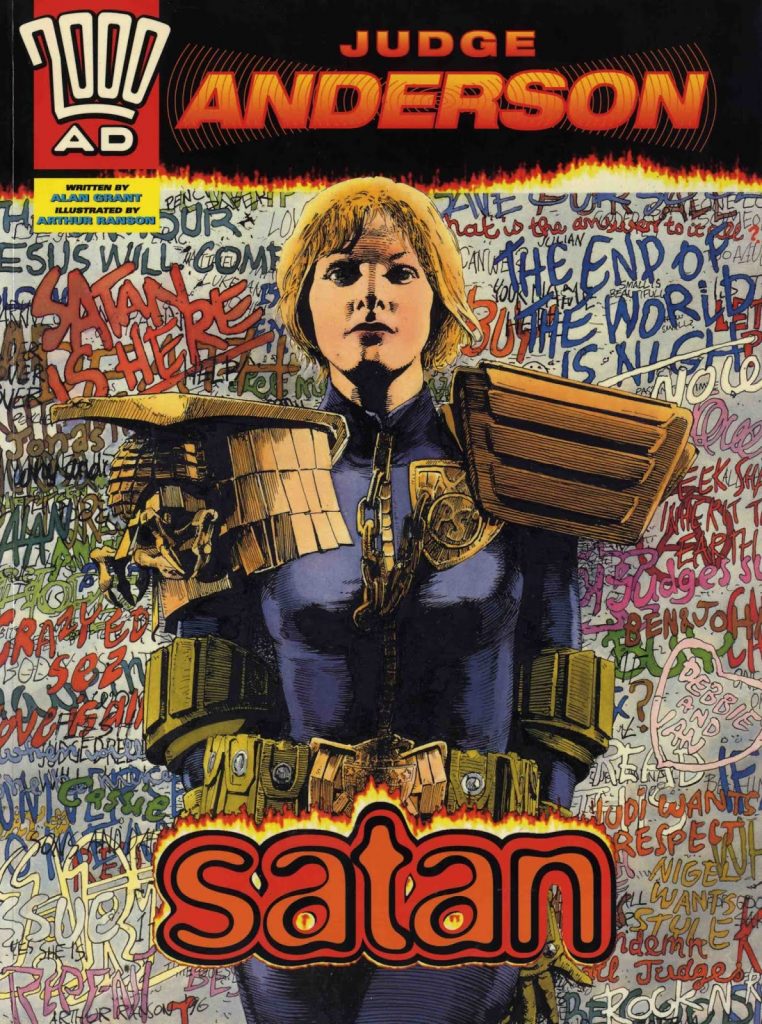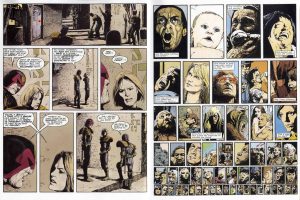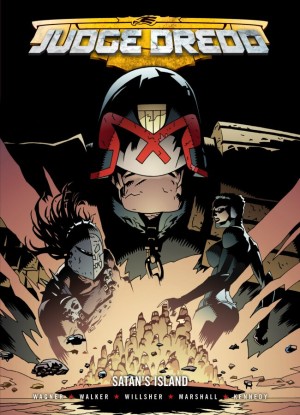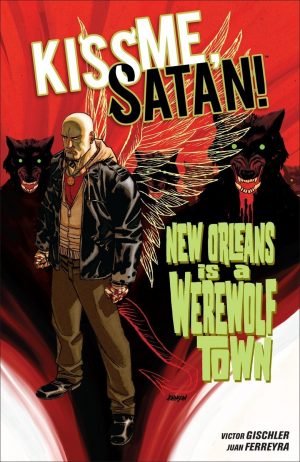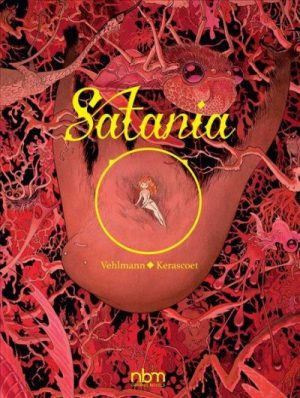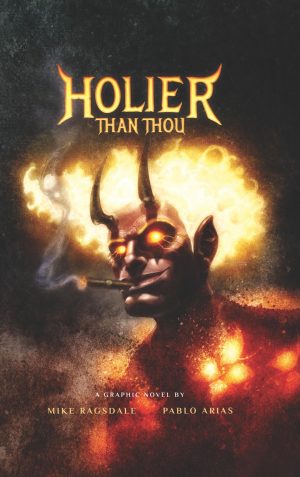Review by Karl Verhoven
Satan contains two Judge Anderson stories drawn by Arthur Ranson, but several years apart. Alan Grant had written all Anderson’s solo material, but it was working on Shamballa with Ranson that proved the landmark. It redefined Anderson, giving her a greater spiritual dimension to run alongside her light personality, and that was the spark plug for subsequent stories drawn by both Ranson and other artists, during which she learned of her past. She’s also been paired with Judge Goon, representing the unthinking brutality of the Judges in upholding a system Anderson’s no longer sure she believes in. The sample art shows their mutual antipathy.
The two stories here look at the opposite sides of 20th century Christianity. ‘The Jesus Syndrome’ has preacher Jon Baptiste rapidly gathering a large following with his endorsement of the Biblical New Testament, while the title story concerns a creature of infinite evil heading toward Mega-City One. During the original continuity much happens in between, drawn by other artists, so a hefty page of fill in text is required.
While both stories here work separately, Grant plots Anderson’s stories as a continuing personal journey, so they’re better experienced with the missing material between, even if most isn’t drawn by Ranson. Much of it is found in Judge Anderson: Childhood’s End. The 2015 Shamballa collection is better, but the entire saga is split over Judge Anderson: The Psi-Files 02 and 03.
Ranson is an impeccable artist, so the art is impeccable, and the effort put in phenomenal. It’s there on the sample pages, refined and detailed, and on some breathtaking spreads. Grant is pictured in the middle of the second row as one of the humans anticipating Satan’s arrival.
Grant switches the mood greatly between the two stories. The first is one of the reminders that he and John Wagner occasionally ran emphasising they don’t see Judge Dredd as a hero, and the Judges maintaining control by any means, but it provides Anderson with an insight into absolute faith. That’s little comfort when what’s to all intents and purposes the Biblical Satan arrives back on Earth in the far longer second story. Grant’s list of humanity’s darkest moments is a gruesome reminder, but to Satan “It’s like I’ve never been away”. There’s little doubt about Satan relishing his role, but Grant characterises his him as a sardonic commentator, perhaps the man of style and taste from the Rolling Stones song, and something he points out is the Judge system being nearer to his outlook than the Judges would concede.
Grant uses ‘Satan’ to pose questions many will have about the inconsistencies of the Christian faith, but it’s not religion-bashing, as he has Satan supply answers, such as “Evil is a disease of the conscious mind. Evil is a misuse of the mind to gain unearned values. All evil is based on deceit”. They may not be comforting answers, and sometimes Satan’s responses are mundane, but it’s quite an unusual statement. So is this being the actual Satan, not an alien impersonator or some illusion? Satan comes to Earth and Anderson takes him on. How can a Psi-Judge triumph against the tricky embodiment of evil? It’s a triumph.
